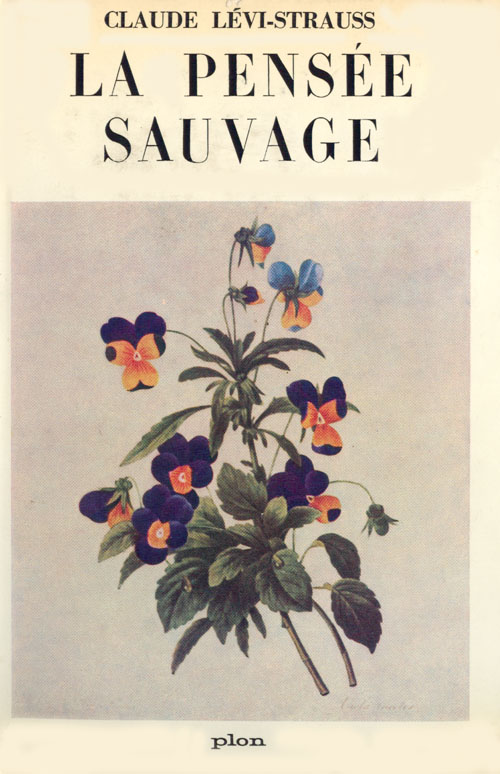... and there is pansies, that's for thoughts
SHAKESPEARE, Hamlet, Act 4, Scene 5
this epigraph was added by Lévi-Strauss in later editions of the book
The following folk tales were included in the French version, but not in the first (1966) translation. They are included in the 2021 translation
Wild pansy (Viola tricolor, L.; Field pansy, Plant of the Trinity)
Once upon a time, the tricolored violet [wild pansy] exhaled a perfumed more powerful than the march violet (or perfumed violet). It grew then in wheat fields which were trampled by all those who wanted to pick it. The violet took pity of the wheat, and she humbly prayed the Holy Trinity to take away her perfume. Her prayer was answered, and this is why she is called flower of the Trinity.
The flower of domesticated varieties comes in two colors (violet and yellow, or yellow and white) sometimes in three (violet, yellow, yellowish white), and is vividly contrasted...
In German: Stiefmutterchen: small step mother.
In popular interpretation, the magnificent spurred petal represents the step mother (second wife of the father), the two adjacent petals, which are also very colored, represent her children, and the two top petals (the colors of which are blander), the children of the first wife. Polish folklore offers a slight different symbolic interpretation, which is all the more interesting since it takes into account the position of the sepals, while offering a poetic content as rich as the German version. The bottom petal, which is the most remarkable, leans on each side on one sepal: it is the step mother, sitted in an armchair. The two adjacent petals, still richly colored, lean each on one sepal, and they represent the children of the second wife, each with one seat. The two top petals, whose color is more washed out, lean laterally on the spur od the chalice which points between: these are the poor children of the first marriage, who must be content with one seat for two. Wagner (In die Natur, p. 3) completes this interpretation. the sumptuously colored petal--that is to say the step mother--must lean downwards as a punishment, while the humble children of the first marriage (the top petals) are turned upwards. The wild pansy is used to prepare a tea which purifies the blood. It is called: tea of the Trinity.
